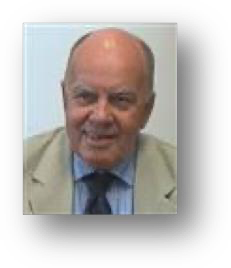
Greg Wojtan MY DAYS WITH LEO
At the beginning of October 1963, aged 25, I went to the Milk Marketing Board to do an aptitude test
for a job as a LEO computer programmer, thinking that it might be more interesting than selling
brushes for Kleen-E-Ze, which had been my job since leaving Edinburgh University that year without
a degree but with lots of flower power.
There were some 120 of us programmer aspirants who, like me responded to the Times job ad placed
by the Milk Marketing Board, but only 2 of us would be hired that day to programme their LEO III
(Editor: MMB not on list of LEO III owners). I came in 3rd in terms of the aptitude test, so the lady
running the show suggested I nip down to Earl’s Court where there was an Office Efficiency
exhibition and where the LEO computer was being shown. Maybe, with my good results LEO would
hire me, she said.
So I did that and a nice LEO lady at the exhibition fixed me up for an appointment the following
Monday, in Hartree House with the then LEO Programming Manager, at the time; one Bernard
Pierce.
When I sat down with Bernard he didn’t say anything for about 7 minutes until I asked whether one of
us should say something, and asked if it should be me.
He stopped doodling and asked me; ”if you have a cup of tea and a cup of milk of the same volume as
the tea, and you take a spoon of milk and mix it into the tea, then take a spoon of the tea & milk
mixture and mix it into the cup holding only milk, will the tea cup have more milk in it than the milk
cup have tea? Or what? Justify your answer”.
Hang on, I thought – I’ve already done and passed my aptitude test! But there was no messing with
Bernard. So I thought a bit more, gave him the correct answer and was hired to start at LEO the
following Monday.
A couple of weeks later English Electric appeared and ‘fused’ with us, but I stayed on working on
LEO for several years.
So, after learning Intercode and CLEO, I was a sort of accolyte to real programmers for several
months before I was sent out to my first solo job at Shell (Editor: Shell Mex & BP) in Hemel
Hampstead. My task was to use the Shell LEO to find out whether there was any sense in Shell
running their Green Shield stamp schemes. In hindsight, the job wasn’t all that difficult, but I did have
several panic attacks, especially as it was my first project – when the word project in the world of
computers had not yet been invented. Anyway I delivered on time, rushing the results on the final day
on my scooter to Shell Mex & BP’s headquartes in the Strand. The results incidentally were that
Green Shield stamps did boost Shell sales, but only for some 6 or 7 weeks after the scheme was
introduced.
In 1965 I worked at Hartree House again, on stuff that really stretched my brain axons to breaking
point. This was because I was working with a bright wire called Gordon Scarrot from the Ferranti
stable. He taught me Zipf’s law, which I used for years after to detect monopolistic practices, and
masses of other esoteric stuff. E.g how to debug radix problems using machine code directly on the
machine: Sort of open brain surgery on the poor LEO. Gordon was surely one of the geniuses that got
attracted to LEO like a magnet. I did
odd jobs for him – him Mentor, me Apprentice. One worthwhile one I remember was to produce a
ready reckoner to estimate the duration of sort programmes run on different Mag.Tape
configurations. (I think our first 6.5MB LEO discs only appeared a year or two later, essentially
solving the data sorting problem. Meanwhile we used painful and unpredictable tape sorting).
As I was finishing the reckoner I got to know Ralph Land. Ralph it was who thought it would be a
good idea to give me something useful to do. This turned out to be a payroll system for the several
thousand employees of the NHKG, Steelworks in Ostrava, Czechoslovakia (Editor: LEO III/41). At
the same Mike Carrington (died in the UK in 1967) had to volunteer to do a stock control system for
NHKG. We had a year for each job and both managed our assignments OK. (One problem I had that
sticks in my mind to this day, was that the payroll programme had to deal with a lady employee of
NHKG who was paying for an elephant in installments to an Indian Maharajah that she had been
married to, but had run away from).
How I got to that first East European LEO job in December 1965 is written up in Hilary’s
compendium of Leo reminiscenses (Editor: Remembering LEO).
After Czecho, I got moved to Poland to do a monstrous stock control system for all the steelworks in
Silesia, for an oufit called HPMOA on a Leo 360. At the time I and my fledgling new family lived
just down the road from Katowice in Chorzow – the dirtiest town in Europe!. On an average day 80
tons of dust were deposited on Chorzow from the skies and my daughter spent her early childhood in
dark grey nappies.
The office was in Katowice, but I and the 4 Polish computer specialists assigned to me to produce this
system had to fit into a room measuring 15 sq.m